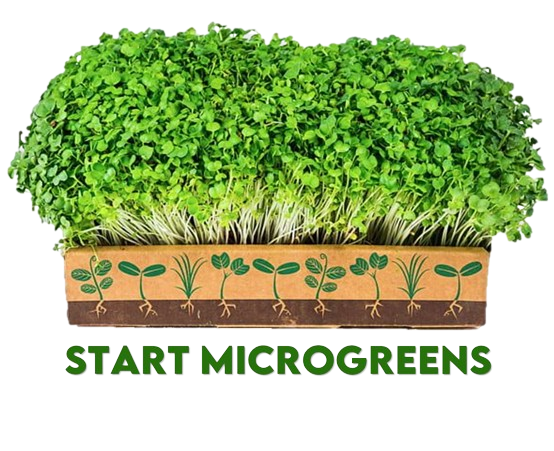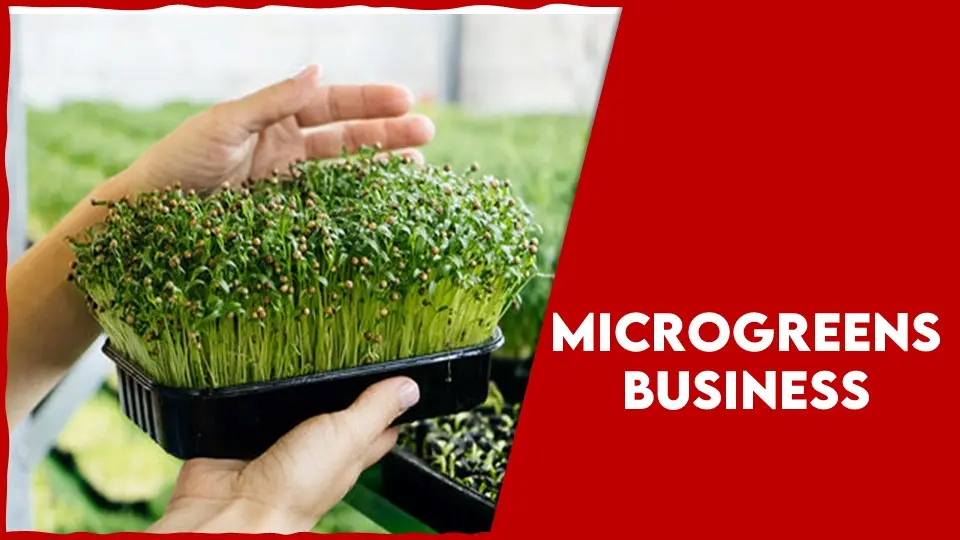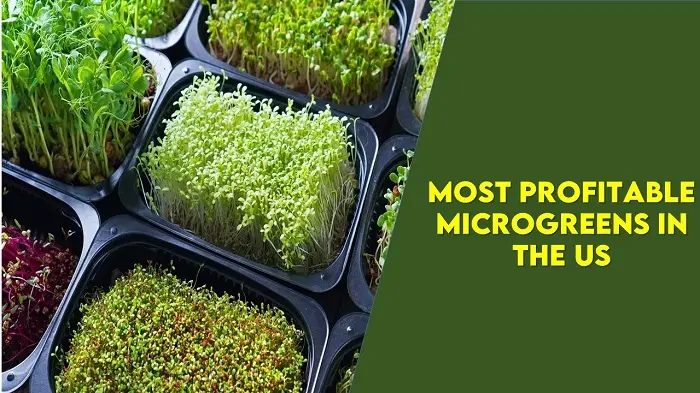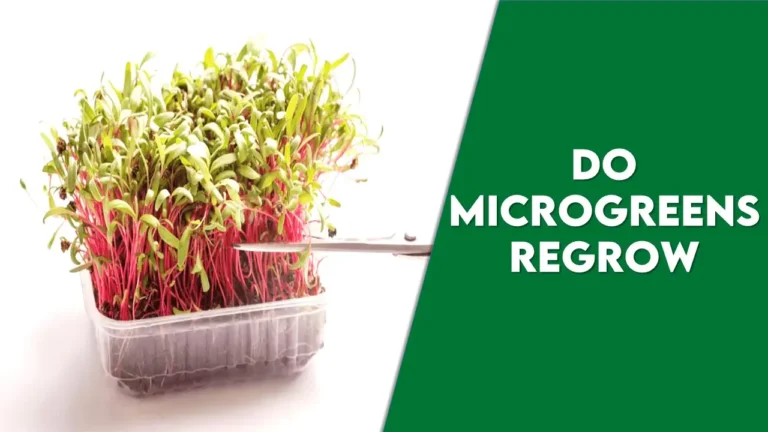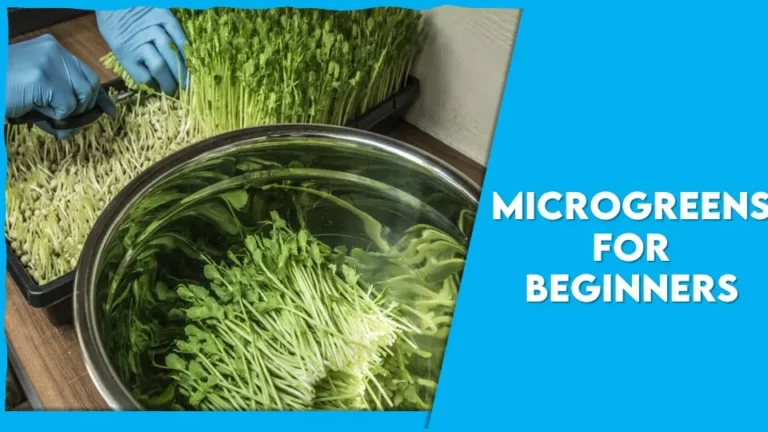Do you have a plan to start a microgreens business? That’s great! Microgreens is the word we use to describe these small plants the top of which is usually featured as the edible part of the plant on high-end restaurant plates. No more plain bowls of cereal, no more boring sandwiches!
Enjoy the taste of your senses with these true power-packing foods. In the coming article, we’ll explore how to begin your own microgreens business simply and neatly. We will start with understanding people’s needs as well as their preferences regarding what to grow. We will further cover how to grow those things, and finally, move to how to sell them.
By the end of this guide, you will no longer be considered a newbie whether you are an experienced gardener or just someone who can identify an amaranth from a mint, you’ll be on the right path toward turning your passion into a successful business. Many people, including you, have started with many business ideas, but this particular idea taps into the ever-growing demand for fresh, flavorful, and nutritious microgreens which is better.
Starting a microgreen business is easy unlike others. To kickstart their microgreens ventures, fledgling farmers would idealize the market demands, select the varieties to grow, and perfect the cultivation methods that can lead them to success. Besides, having an effective marketing strategy and establishing trusted distribution models, it is also important to succeed in a microgreens business that enables it to meet the needs of both local markets and commercial consumers. This article will help you out with starting a microgreen business.
Why STARTING Microgreen Business IS PROFITABLE?
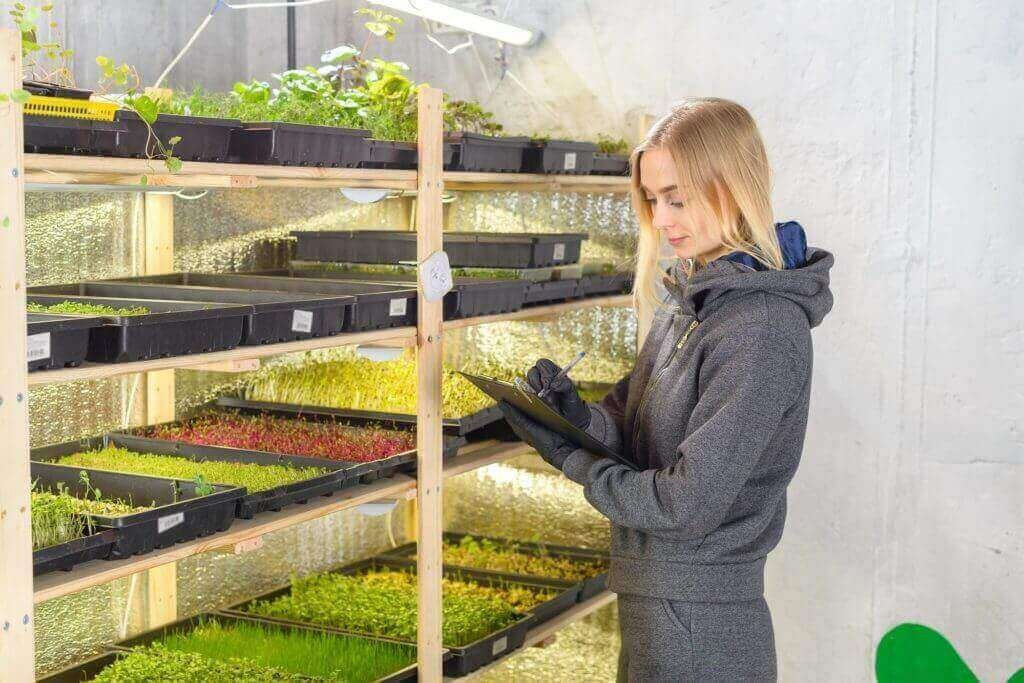
Growing Demand
As a niche item, people are more into microgreens because these are getting more and more famous among health-conscious consumers, chefs, and food enthusiasts. Microgreens are placed by multiple chefs for their distinctive tastes, vivid colors, and strong nutritional value, rendering them the main component of salads, sandwiches, shakes, and expensive dishes.
High-Profit Margin
Microgreens are normally sold at prices that are higher than mature plants and herbs. Even though they are the lesser-known among the bigger veggies, microgreens, with their concentrated taste and interesting look, can be sold at a higher price per ounce. Such a high profit margin comes out as great for microgreens growers, yet marketing to some specific customers like upscaled restaurants or health food stores is of high importance.
Low Startup Costs
As opposed to opening a conventional farm undertaking, initiating a microgreens business demands a small amount of investment in machinery, on-property, and buildings. Growing microgreens is a feasible process in an indoor environment, where only trays, grow lights a grow lamp, and potting soil are required. A low entry threshold is a very successful component that encourages the involvement of those who are challenged in access to entrepreneurship due to the minimal capital.
Fast Turnaround Time
Microgreens are young seedlings that are grown for a very short interval, around 7 to 21 days, a matter of days depending on the type of plant. This implies that farmers have an advantage in that they can harvest crops and generate income within a shorter period since they do not need time to wait for a bumper harvest On the other hand, the relatively high turnover ensures the land is in a constant state of production enabling a stable provision of fresh microgreens against the existing demand.
Year-Round Production
In comparison with other crops that are predetermined by the season nature, microgreens can be grown all year round, irrespective of the time of the year. Contrary to traditional growing methods, indoor growing facilities provide buoyant environments that remain climate-controlled throughout the year, therefore enabling consistent production of crops, and in return guarantee a reliable source of income year-round.
Sustainable Farming Practices
Microgreen systems can be eco-friendly and sustainable when sustainable organic agriculture and residue management are used in practice. Indoor microgreens’ growth without pesticides and herbicides lowers the requirement versus hydroponic or soil-less production techniques which conserve water and narrow the downslope against soil erosion. Upcycling technology gives likely-minded entrepreneurs the chance to uphold sustainable farming methods.
How To Setup A Microgreens Business

Market Research
The first thing that you should do is to get information about the demand for sprouts in your area. Identify your potential customer base which is referred to as restaurants, health food stores, farmers markets, and individual consumers. Know their taste, the price they will not go beyond, and the volume of products they will surely need.
Business Plan
Build a well-thought-out business plan that includes your strategies for achieving your goals, entering your target market, pricing, initial expenses, operational costs, and revenue projections. To be able to visualize your business destiny and have something to tell potential funders in growing your business, this strategy will serve as a guide.
Legal Considerations
Registration of your business, getting required permits and go through required licenses, as well as satisfying food production and sales regulations of the local authorities. Try a separate legal unit from you in such as a sole proprietorship, partnership, or limited liability company (LLC).
Location and Setup
Decide on the place where your microgreen farm will begin. It can be an extra room you possess at home, a greenhouse, or even a rented commercial space. Set up your growing area with the required gearing like LED or fluorescent lights, trays for seedlings, hydroponic or soil as a growing medium, and irrigation systems.
Selecting Seeds
Pick seeds known for microgreen production that are elite quality for seed. Be conscious of the taste and appearance. Watch out for consistency and speed to maturity. To expand your potential customer base, consider offering various varieties to take advantage of a diverse selection.
What Costs Are Incurred For Setting Up A Microgreens Business
Growing Space
No matter the space you decide to use – a spare room in your house, a greenhouse or the commercial premises – the prices for protection and outfitting it is another issue you have to wager. This can comprise rent, utilities, and the possibly required renovations or repairs.
Equipment
The key material of equipment for the cultivation of microgreens includes the growing trays, grow lights, irrigation systems, shelving or racks, fans, and temperature control devices.
Seeds
The seeds that are specifically used in the production of microgreens and of high quality are the most important because of their contribution to the success of the production. Although seeds are significantly cheaper compared to other inputs, the marginal cost can still drive up the total cost of production, particularly in a variety mix with multiple types of microgreens.
Growing Medium
One way you could do that is by using a growing medium like potting soil, coco coir, or hydroponic mats that give sufficient support to the development of microgreens. The price of growing medium is material dependent and crop-specific and it depends on the amount you will use for your business.
Utilities
Included in ongoing expenses are utilities like water, electricity, and natural gas in case some heating systems types are used. Growing environments within enclosed spaces might be subject to voltage tension regulation, ventilation or moisture, depending on the desired level of environmental endurance.
Packaging and Labeling
Among these packaging materials, you will need some shales, clamshells, or bags to come up with a suitable package for the microgreen crops that we have harvested. Moreover, you should have labels or stickers so that you are easily identifiable and your customers are informed about what kind of information they need.
Marketing and Branding
However, you can pick up small steps initially but creating a budget for materials like promotional materials, building a website and advertising is crucial though to establish your brand and attract customers.
Labor
Bearing the size of your operation in mind, labor costs may be involved for the processes like sowing, watering, monitoring, gathering, packaging, and on-selling of the crops. This could be represented by employees’ salaries or your cash out for the time you put into it.
Regulatory Compliance
Besides, calculate what you’ll spend on any permits or licenses that you’ll get and observe the food safety and hygiene standards while trading.
Conclusion
This is all about starting a microgreen business, the prime requirement is the initial investment involved, prospects for higher returns, maintaining ability, and innovations make it a proven investment. Through this article, we have seen that the advantages gained from opening your own microgreens business include the low cost of starting a business, immediate production of products, all-year-round production possibility, and the ability to implement ecology farming.
On the other hand, be sure to keep in view the difficulties, including, the intense labor, cut-throat competition, and legal compliance that may come on the way, this requires to design of a detailed business plan to steer through the problems properly. By developing a comprehensive strategy focused on diligence, dedication, and adherence to quality standards, entrepreneurs will be game changers in the sector seeing enthusiasts consume freshness and vibrancy in each of the harvests.
